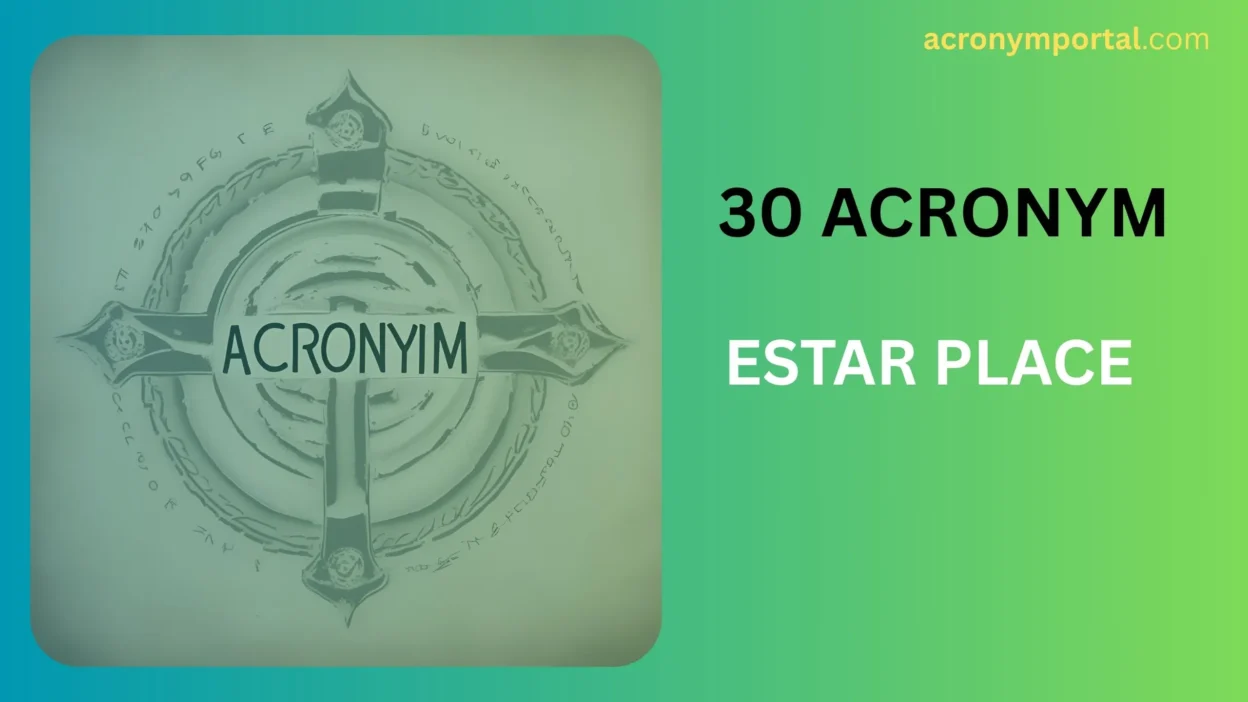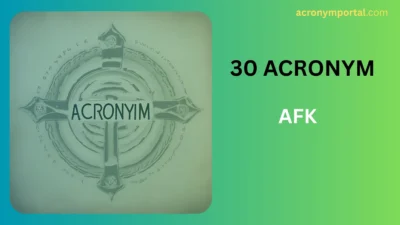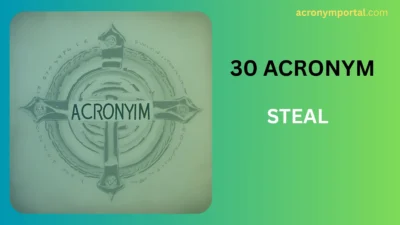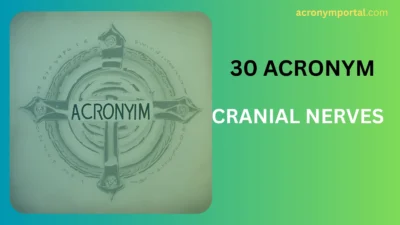When learning Spanish, the verb “estar” can be confusing—especially when deciding whether to use it instead of “ser.” A helpful way to remember when to use “estar” is the acronym PLACE, which stands for:
- P – Position
- L – Location
- A – Action (ongoing, progressive tenses)
- C – Condition
- E – Emotion
So, when we say “estar PLACE acronym,” we’re really talking about a memory tool to determine when to use “estar” in various contexts.
But there’s more than one way to remember these situations—or explain them to others. In this guide, we’ll introduce 30 creative or educational alternatives to the “estar PLACE acronym”, each offering a slightly different way to teach, understand, or remember the correct use of estar.
You’ll also find a brief description, example, and guidance on when each is most appropriate—whether you’re teaching beginners, reinforcing grammar in writing, or just trying to master Spanish yourself.
🔄 30 Alternatives to the “Estar PLACE Acronym”
1. FLEA
Stands for: Feeling, Location, Emotion, Action
Example: Use “estar” for FLEA situations—like feeling sick or dancing now.
When to use: Great for younger learners or beginner classes.
2. CLAP
Stands for: Condition, Location, Action, Position
Example: CLAP reminds you when to “estar”—especially for changing states.
When to use: Easy to remember and energetic—good for visual learners.
3. HELP
Stands for: Health, Emotion, Location, Present progressive
Example: “Estar” gives you HELP when you’re sick, sad, or standing somewhere.
When to use: Ideal for classroom posters or quick recall.
4. PEACH
Stands for: Position, Emotion, Action, Condition, Health
Example: Estar is your PEACH when you’re feeling off or doing yoga.
When to use: For a fun, fruity twist in language games or practice.
5. SALT
Stands for: State, Action, Location, Temporary
Example: Use SALT for states that change—like feeling hot or being at school.
When to use: Great for explaining temporary states clearly.
6. PLACE+
Stands for: Adds “+Ongoing Action” to PLACE
Example: PLACE+ covers even more: like “estás estudiando.”
When to use: To expand PLACE without creating a whole new acronym.
7. TEMP
Stands for: Temporary, Emotion, Motion, Position
Example: TEMP means use estar when things aren’t permanent.
When to use: Highlights contrast with “ser” (which is for permanent traits).
8. CHOP
Stands for: Condition, Health, Ongoing, Position
Example: You “chop” into temporary conditions with estar.
When to use: Quick and catchy for middle school learners.
9. LOCO
Stands for: Location and Condition Only
Example: Use LOCO to remember estar is for Location and Condition.
When to use: Humor-based teaching; students remember it easily.
10. FLASH
Stands for: Feeling, Location, Action, State, Health
Example: In a FLASH, estar tells you where you are and how you feel.
When to use: For fast-paced lessons or reviews.
11. VELCRO
Stands for: Verb Estar: Location, Condition, Reaction, Ongoing
Example: VELCRO sticks to the changing stuff—estar only!
When to use: Slightly advanced learners who need conceptual memory tools.
12. CHAMPS
Stands for: Condition, Health, Action, Mood, Position, State
Example: Estar is for CHAMPS of temporary expression.
When to use: Gamified or team-based language learning.
13. PLATE
Stands for: Position, Location, Action, Temporary, Emotion
Example: “Estás en la PLATE of feelings and movement.”
When to use: A fun variation of PLACE that includes temporariness.
14. CLEAR
Stands for: Condition, Location, Emotion, Action, Reaction
Example: “Estar” makes things CLEAR—feelings and states especially.
When to use: Explains broader emotional or temporary ideas.
15. CALM
Stands for: Condition, Action, Location, Mood
Example: “Estoy CALM when I’m describing how I feel.”
When to use: To emphasize emotional or psychological states.
16. VIBE
Stands for: Verbs, In-progress, Body state, Emotion
Example: Use estar when describing your current vibe.
When to use: Great for Gen Z or casual learners.
17. SHAPE
Stands for: Situation, Health, Action, Position, Emotion
Example: Estar explains your SHAPE in a moment.
When to use: When combining body and mental state expressions.
18. HOPES
Stands for: Health, Ongoing, Position, Emotion, State
Example: Use estar to express your HOPES in life.
When to use: Inspirational or motivational class themes.
19. DRAMA
Stands for: Doing, Reaction, Action, Mood, Awareness
Example: Estar is all about the DRAMA—what’s happening now.
When to use: When teaching dynamic expressions.
20. MELT
Stands for: Mood, Emotion, Location, Temporary
Example: Use estar when your feelings MELT or change.
When to use: Focus on emotional volatility.
21. FEAR
Stands for: Feeling, Emotion, Action, Reaction
Example: In moments of FEAR, estar helps describe what’s happening.
When to use: Storytelling or suspenseful contexts.
22. ALERT
Stands for: Action, Location, Emotion, Reaction, Temporary
Example: Stay ALERT and use estar for what’s in motion.
When to use: For action-oriented learning.
23. SOAP
Stands for: State, Ongoing, Action, Position
Example: Just like a SOAP bubble, emotions with estar don’t last.
When to use: Fun metaphor for fleeting moments.
24. SCALE
Stands for: State, Condition, Action, Location, Emotion
Example: Use estar to SCALE your feelings and place in the world.
When to use: Structured, academic learners.
25. LENS
Stands for: Location, Emotion, Now, State
Example: Estar is the LENS through which you see current conditions.
When to use: Explaining point-of-view in real-time.
26. GLOW
Stands for: Going-on, Location, Outlook, Wellness
Example: Estar helps express how you GLOW—or don’t.
When to use: Encouraging language learning with positivity.
27. COZY
Stands for: Condition, Ongoing action, Zone (location), Your feeling
Example: Feeling COZY? That’s estar.
When to use: Creative, sensory-based memory.
28. PALE
Stands for: Position, Action, Location, Emotion
Example: When things feel PALE, use estar to describe the vibe.
When to use: Mood-focused or poetic writing.
29. STIR
Stands for: Situation, Time-bound, In-motion, Reaction
Example: Estar helps describe what’s STIRring around you.
When to use: More advanced contexts or writing prompts.
30. TAPE
Stands for: Temporary, Action, Position, Emotion
Example: TAPE it down with estar—it’s not going to last forever.
When to use: To explain the “temporary” nature of states.
🎯 Choosing the Right Acronym for the Right Learner
Depending on who you’re teaching or how you’re learning, certain acronyms will be more helpful than others:
- Visual or playful learners may connect with: PEACH, FLEA, COZY
- Older or more advanced students may benefit from: VELCRO, STIR, CLEAR
- Younger learners will love acronyms like: CLAP, LOCO, HELP
- Writers or content creators may use: LENS, TAPE, GLOW for context-rich scenarios
Also, don’t be afraid to mix and match these depending on what resonates with you or your audience. The beauty of acronyms is that they help translate grammar into memorable, human experiences.
🧭 Final Thoughts
The PLACE acronym is a fantastic starting point, but these 30 alternatives give you flexibility, creativity, and even personal flair when learning or teaching Spanish grammar. Whether you’re guiding others or growing your own fluency, a good acronym makes “estar” easier to remember—and more fun to use.
So, go ahead: pick your favorite, create flashcards, or invent your own! The goal is to make language feel alive and practical, not just grammatical.




